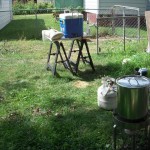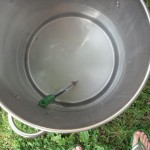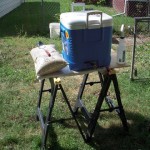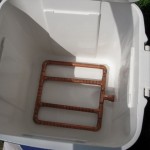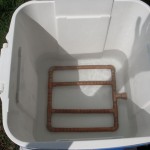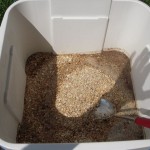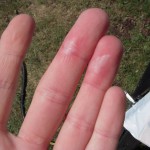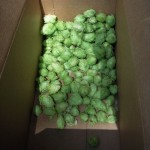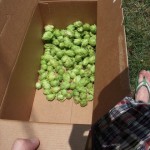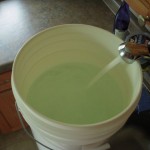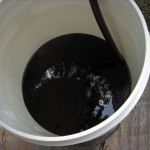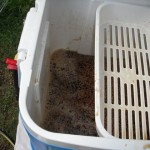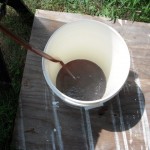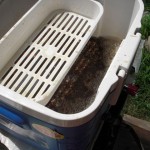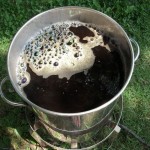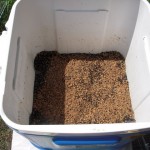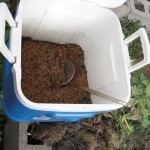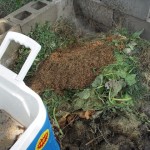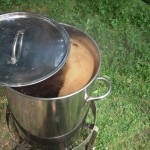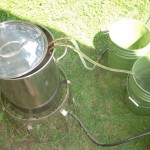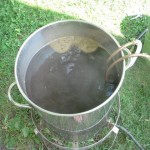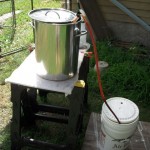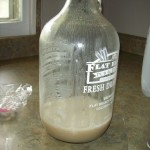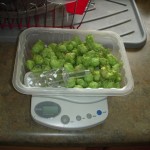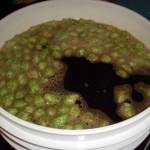Who knew that a $7 thermometer could make such a huge difference? I basically added ~13% eff to this brew session, to come in at ~73%, much better then the 60% on the last batch of IPA.
For the dry stout I had an OG of 1.050 @ 76F with ~6 gallon of wort going in the primary fermenter. After I pitched the yeast it only took about 6 or 7 hours, before the airlock was bubbling like crazy. So enough rambling on my part, here is the recipe that JRR and I cobbled together two weeks ago:
6.5 lb – Pale Malt (2 row) UK
2 lb – Barley, Flaked
1.5 lb – Carafoam
1 lb – Caramel/Crystal Malt – 60L
.5 lb – Carafa III
.5 lb – Barley, Roasted
.5 lb – Chocolate Malt (UK)
1 oz. – East Kent Goldings – Pellet – 60 min
1 oz. – East Kent Goldings – Pellet – 15 min
1.8 oz. – Centennial – Fresh Whole Hops – Dry Hopping
Wyeast Irish Ale – 1084
Other info: Mashed for about 90 minutes at 148-150F with 4.25 gallons of water; sparged with 5.5gal of 185F water; First running was 3.5gal and the second/final running was 3.75gal; 90 minute boil; 5 days in the primary, FG 1.012 @ 80F; at least 11-14 days in the secondary before kegging.
Lessons learned:
1) Having a good thermometer makes a huge difference in trying to get the best efficiency out of your grains.
2) I used the primary fermenter bucket to measure all the water. (Why didn’t I think of this sooner?) This is much easier then remembering how many measuring cups you added to the pot. Just fill to a gallon line, then use a measuring cup to adjust the volume up or down from there.
3) 1 gallon of 185F water will not bring a 150 mash up to 168F; at best it will raise the temperature to 160-162F. Next time I’m going to add a gallon of boiling water for the mash out.
4) If there is only thing I am always going to do in the future, it will be to make and use a yeast starter before pitching the yeast into the primary fermenter.
